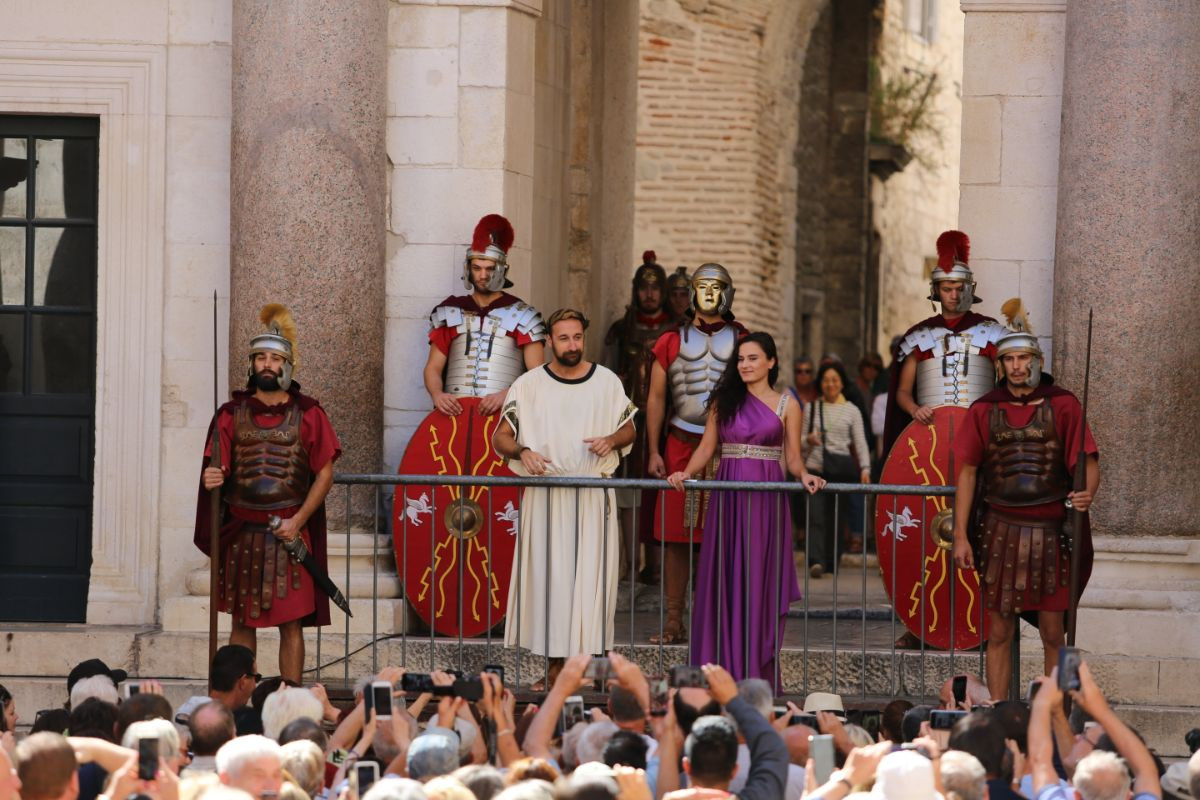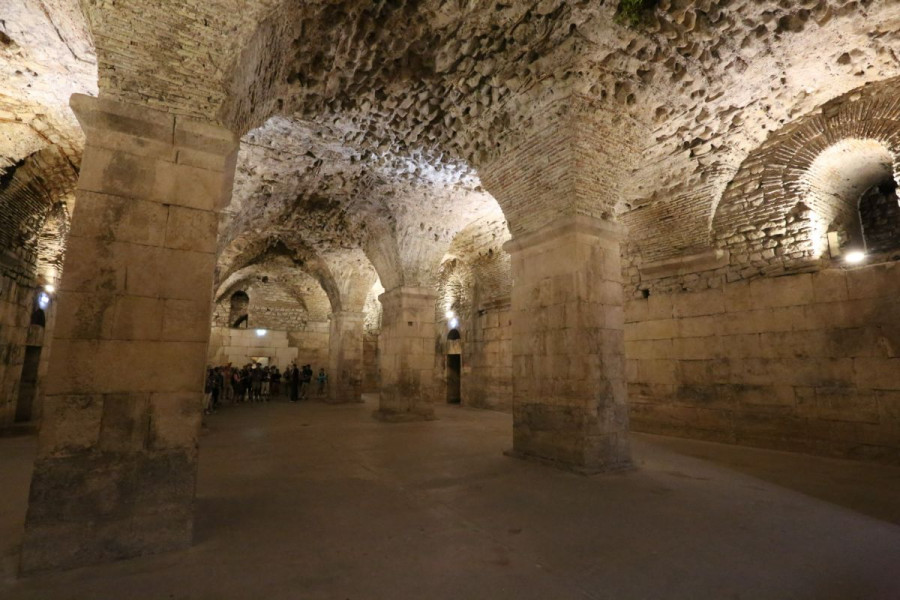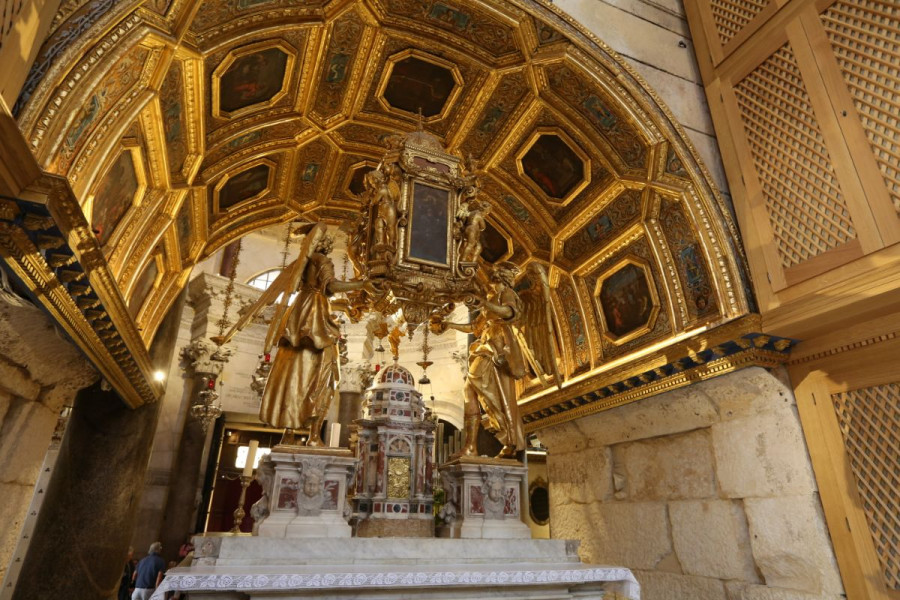
Diocletian's Palace is Split's most important and undoubtedly most famous cultural site.
Diocletian's Palace is Split's most important and undoubtedly most famous cultural site. It has become a city trademark, the core of the urban environment that must be visited when sailing into Split's harbour. It's incredible how beautifully maintained the Roman palace is today, with its foundation standing virtually exactly as it did 17 centuries ago. It is one of the largest ancient monuments, and its condition implies that it is also the best-preserved relic of old Roman construction. Split is thought to be 1700 years old, and the palace was built in the 3rd century AD as Emperor Diocletian's vacation palace, where he was supposed to rest when his reign ended. The palace took roughly ten years to build and is now part of the UNESCO world heritage of protected monuments. A vast number of the palace's sights have been maintained and are open to tourists. So if you are a fan of the Roman empire and the beautiful Mediterranean, make sure to put this place on your bucket list. This region is special and worth visiting because of its warm and pleasant atmosphere, tranquil sea sheltered by islands, abundant vegetation, and mild winters with no harsh weather extremes. To put it simply, it is a city worth seeing, as many travellers come here for its beauty during their yacht charter and it easy to understand why such a powerful ruler picked the charming Split.
The palace was originally square in shape, but throughout the years it changed shape, and as the population began to settle, it suffered substantial modifications in structure and construction.
The palace used to have four doorways, three from the land and one from the south side where the sea surrounded the palace. The golden, silver, iron, and bronze doors of the palace are still linked with it today, with the golden door acted as the emperor's triumphal entrance into the palace. Internal streets run throughout the palace, connecting the land entry, Street cardo, and Street decumanus. They meet in the centre of the palace, the Peristyle, which is surrounded by arches and sphinxes. The peristyle is actually a large plaza that unites the northern and southern parts of the city, with Romanesque and Gothic building fronts and facades visible inside the old columns. Later, as the city grew, the buildings included Renaissance and Baroque elements. The Split Peristil is one of Croatia's most beautiful squares. It is surrounded by the Cathedral of St. Dujam, the palaces basement, and the former Jupiter temple. The infamous grave of Emperor Diocletian is located next to it. It is well known that he persecuted Christians, and the most perplexing aspect is that his tomb was converted into a Catholic church dedicated to St. Dujam, a Christian martyr. It's worth noting that Emperor Diocletian was born in Salona, the Roman province of Dalmatia's capital. Salona was a big ancient city that grew near the mouth of the Jadro river. The emperor was astute enough to build an aqueduct from Salona to his palace so that he would always have drinking water. The residents of the palace and his army were never sick and had remarkable hygiene because he learned how to separate drinking water from waste water. A fun fact is that the aqueduct's construction still serves the same purpose today. The palace changed constantly after Diocletian's death. It was sparsely occupied for the first few centuries before becoming densely populated. People adapted to living in the palace, and through time, they creatively and uniquely transformed it into a metropolis.
Cellars of Diocletian's Palace
The basements of Diocletian's Palace are one of the best-preserved ancient structures of their type in the world, and they have yet to be thoroughly explored. The form and uniqueness of the palace's basement are crucial for the palace's designation as a UNESCO World Heritage Site in 1979. The cellars were a storage component of the palace in Roman times. Even though the sea penetrated part of them, the palace structure was not destroyed. The palace's residential area was built over the cellars, which were also partially underground. By excavating the palace and discovering the living spaces, the shape of the basement was also discovered, which significantly helped the research of this area. The shape of the walls was utilized to reconstruct the imperial rooms, showing the way of life of the imperial assistants and army, their dining habits, and the kind of food they ate. The palace cellars have a large collection of Roman Empire jewels and ceramics. The southern part of the palace was the emperor's residence, with a beautiful view of the sea and the islands; the northern part of the palace was used to house troops and staff, as it is the best preserved, it served as the filming location for Game of Thrones. Today, a section of the cellars is open to tourists and serves as an exhibition space, but there is an entrance fee, which shouldn't discourage visitors from experiencing Emperor Diocletian's lifestyle.
Cathedral of Saint Dujam
During Emperor Diocletian's rule, the Cathedral of Saint Dominus was built. Since the emperor was a ruthless executioner that killed many Christians, he intended the palace to be his mausoleum rather than a church. As a result, and very ironically, after his death, they threw out his sarcophagus and installed the martyr Saint Dujam's grave in the church. The bell tower of the cathedral, was established in the Gothic style in the 14th century, and is a trademark of Split. It is also accessible and provides a stunning perspective of the old town, the palace outlines, and the surrounding islands.
Golden Gate entrance
The Golden Gate was built in the fourth century to serve as the primary entrance to the Palace, and Diocletian himself entered it after abdicating the throne in 305 AD. The road from Salona, then the center of Dalmatia's province, led to the Golden Gate. In addition to the Golden Gate, four defensive towers guarded the main entrance. They were, however, dismantled over time.
Fruit square
The Fruit Square is located in the palace's southern wing, directly next to the Split shoreline. The sculpture of Marko Marulić, the famous Croatian and Split writer and poet, is the square's major attraction which was created by Ivan Meštrović, a well-known Croatian artist. This is a location where advents and fun events usually hold place all throughout the year.
Entrance to the palace is free, as it is part of the city itself and covers an area of 10,000 m2. However, the entrance to buildings of special interest for visitors inside the palace is charged.


